Why 4K isn't going to solve the big TV companies' problems
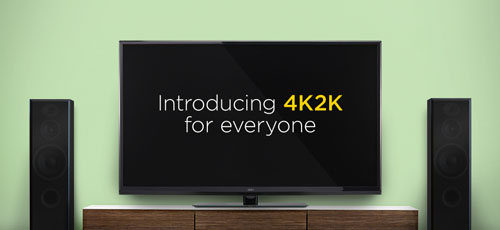
So, 3D's done and dusted, right? No-one really wanted it much, no-one uses it much, Sky's even stopped making it a premium product and is now bundling it with its HD offering. Even the BBC's gone cool on the whole idea.
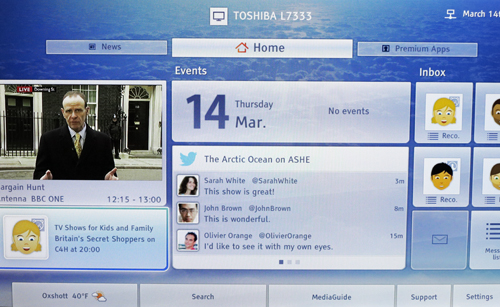
Smart TV? Hmmm… Been there, done that: now just about every TV you buy has some degree of smart functionality, to the extent that manufacturers like Toshiba are pushing the 'even smarter' nature of their sets to set them apart from the ones that merely let you watch catch-up TV, do a bit of browsing and send the odd tweet.
You know, the ones that merely do just about everything you'd ever really want or need your TV to do.
Where do we go now, then? Or rather, where do the big TV companies – still struggling to make any money out of building and selling tellies – go, now that just about every feature they've come up with in the quest for what LG recently called 'premiumisation' (ugh!) has so far been 'commoditised' (only slightly less ugh)?
Or in other words, has 50% of no effect at all when it comes to keeping the price of a telly up in today's cut-throat market.
Thinner, OLED screens? Gonna be pricey; gonna be a while before anyone can mass-produce them to a consistent standard without throwing away a significant chunk of the output from the production.

Curved screens? Well, they're different, and if all you want to do is achieve that differentiation from what everyone else is making, they do the job.
Get the What Hi-Fi? Newsletter
The latest hi-fi, home cinema and tech news, reviews, buying advice and deals, direct to your inbox.
But I mean, come on – when was the last time you looked at your TV at home and thought 'If only the outside edges of the screen curved round toward me…'?
OK, so that's 3D out of the frame, smart TV looking a bit of a dumb idea, OLED still a pipedream and curved TV just too much of a curveball – and you can't even rely on screen size to do the business these days.
Way back when, 28in was the usual home size, 32in the 'gawd, that's TV's yuge!'; now, 42in is where the action is, and 50-60in screens not out of the question.
Nor indeed beyond the budget: this weekend, you can pick a perfectly respectable 50in Panasonic plasma for just under £380.
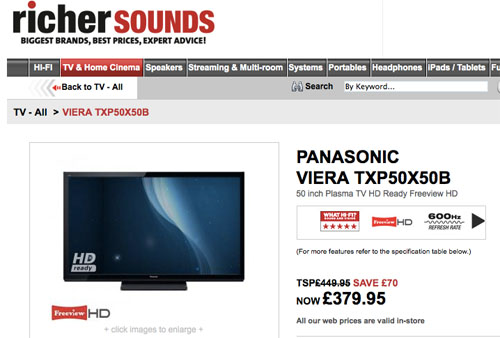
50in. Big-name. Plasma. £380.
Is it any wonder the major Japanese consumer electronics names just can't find a way for their TV divisions to turn a profit?
And that even the monsters of the TV business, Samsung and LG, stare a bit nervously at their shoes when the question of how much money they actually make on selling tellies is raised?
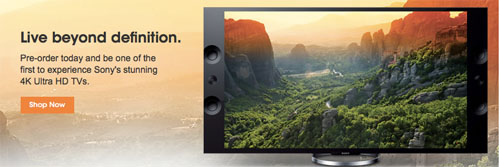
Never mind, there's always 4K: the next-generation TV standard is coming – at least if anyone can actually find a way of transmitting 4K content into our homes, or delivering 4K movies we can buy for an evening's viewing.
Is 4K the Next Big Thing? The Holy Grail of New Profitability for the TV industry? Judging from the big-ticket TVs being rolled out by the big names, it looks like that's the plan, and Sony's sufficiently gee'd up about the whole thing to have shipped a load of writers out to Hollywood the other week to celebrate its 4K future.
Not to mention thinking that 'Mastered in 4K' is going to be a sufficient draw to get us to buy a (frankly dog-eared) collection of movies on Blu-ray all over again.
Of course, they don't play in 4K: despite the mastering, they're still standard Full HD 1080p discs, not the 2160p full 4K monty. But there's the suggestion that the mastering process will make these discs look extra-specially spiffy when they're upscaled onto your new 4K TV.
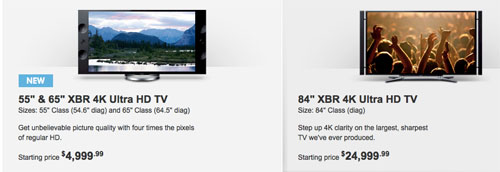
For which, by the way, you should expect to be paying top dollar: pre-order Sony's 55in XBR-55X900A set in the States, for delivery in a couple of weeks' time, and it'll cost you $5000. Or $25,000 if you fancy the 84in model.
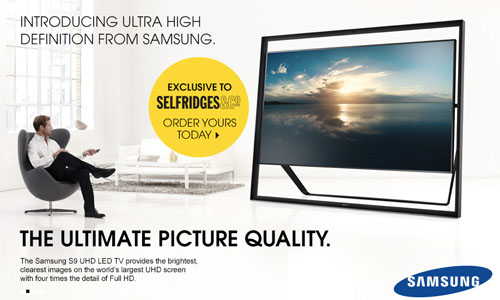
Meanwhile the 85in Samsung S9 4k TV is now available through Selfridges in the UK.
For £35,000.
But then, as Sony's US advertising puts it, 'Once you've seen the world in 4K Ultra High Definition, there's no looking back', apparently.
55in TV, $5000 – job's a good 'un, and at last the big TV companies are making money again.
Except…

You can buy a 50in 4K TV in the States right now, complete with two-day delivery, for just $1500.
Yup, less than a third of the price of the Sony, and from the online reviews cropping up from both buyers and consumer electronics sites Stateside, it's something of a belter.
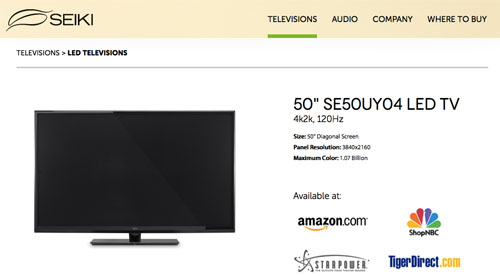
Sold by Seiki, a US-based brand of Chinese electronics manufacturing giant TongFang Global – yes, another of those monster Chinese electronics companies you've probably never heard of – , the Seiki SE50UY04 is a full 3840x2160-pixel LED-lit LCD TV, complete with a claimed 5000:1 contrast ratio and 6.5ms response time, 4K upscaling, three HDMI inputs and even audio amplification from Yamaha.
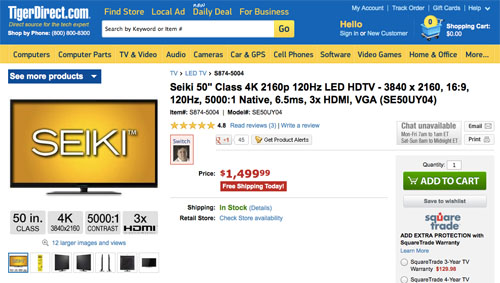
That must be giving some of the top names in TV a bit of a wobble right now, but could it ever happen here?
Well, TongFang showed a 4K prototype at last summer's IFA in Berlin, with the avowed intention of targeting Europe for sales expansion. Except then we didn't know just how inexpensive that 50in 4K set could be when it hit the shops.
Now we do, and now the consumer electronics majors do too, there could be some serious behind-the-scenes rethinking going on in offices in Tokyo, Osaka and Seoul.
Wonder what they'll come up with next...?
Written by Andrew Everard
Andrew has written about audio and video products for the past 20+ years, and been a consumer journalist for more than 30 years, starting his career on camera magazines. Andrew has contributed to titles including What Hi-Fi?, Gramophone, Jazzwise and Hi-Fi Critic, Hi-Fi News & Record Review and Hi-Fi Choice. I’ve also written for a number of non-specialist and overseas magazines.
